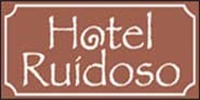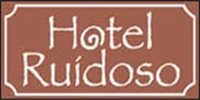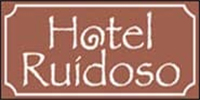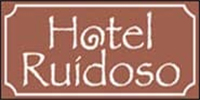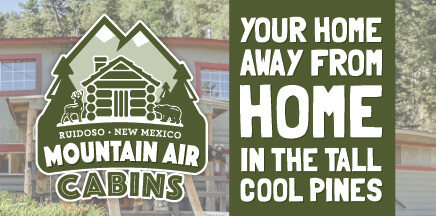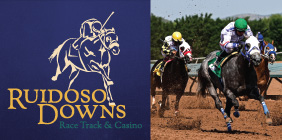By Johnny Hughes - Elite Outfitters
The Three Rivers Trailhead access the southwest portion of the White Mountain Wilderness Area. Not only is this Trailhead the only access point on the western side of the Wilderness, it is the lowest elevation of any major Trailhead in the entire Wilderness. A well-developed Forest Service campground is available at the Trailhead. Several horse corrals have also been constructed for public use.
The Three Rivers Trailhead provides hiking opportunities for novices to experts. This area is some of the roughest, yet most beautiful country in the Wilderness. Many bluffs and rock outcrops are present along Three Rivers Canyon. Most of the trails accessed from this Trailhead are long and climb lots of vertical feet. Yet, lower reaches of the trail system provide ample options for novices.
The elevation of the Three Rivers Trailhead is 6,400 feet.
To reach the trailhead, take US Highway 54 north out of Tularosa approximately 16 miles to the intersection with Forest Road 579. Turn right (east) onto Road 579 and proceed another 14 miles to the Three Rivers Campground. The first five miles of Road 579 are paved with the remainder consisting of improved gravel. The route is easily traveled by car. Proceed through the campground to an oval parking area located at the trailhead. Free parking is available in this area.
Three Rivers Trail (#44)
Trail Distance - 6 miles
Net Elevation Change - 2,950 feet
Highest Elevation - 9,920 feet
Three Rivers Trail (#44) begins on the south side of the small stream issuing from Three Rivers Canyon. The trail quickly crosses over to the north side of the stream and begins gently climbing up the canyon.
The intersection with Dry Canyon Trail (#46) is reached ¾ mile from the Trailhead. A sign marks the intersection.
Proceed another 3/4 mile and the Three Rivers Trail crosses the stream back to the south bank. The character of the canyon now begins to change drastically. The trail crosses over into a geologic unit called the Three Rivers Stock. The resistant igneous rocks of this Stock form huge rock pinnacles and towering cliffs.
The trail meanders back and forth across the creek over the next 1.5 miles to the confluence with South Fork. About 1/4 mile past Fall Creek, a jumble of large boulders is present along the trail at the base of a large cliff. A natural shelter has been created in the voids of the boulders that is capable of accommodating a large number of people should a rainstorm pop up.
A large percentage of the surface water flowing in Three Rivers Canyon issues from South Fork. As a result, the flow in the main canyon diminishes greatly above this confluence.
The Three Rivers Trail begins to steepen above South Fork. It climbs steadily through aspens, limber pines and Douglas firs. This area of the canyon is very pristine and shows few signs of human use.
Approximately 1.5 miles above South Fork, the trail emerges from the timbered canyon bottom at the base of a large meadow that extends up the mountainside. The trail begins a series of long, gentle switchbacks that ultimately emerge at Crest Trail (25) on the Sacramento drainage divide. A few attempts to bypass the switchbacks have resulted in some unnecessary erosion.
Trail (#31) is shown on the Wilderness topo map to cross over the ridge from Three Rivers Canyon to Dry Canyon. This trail seems like it would make a great shortcut into Dry Canyon. The bad news is that the trail does not exist anymore. Only a rough, cross-country hike through an old burn area exists now.
The Three Rivers Trail joins Crest Trail #25 and Aspen Trail #35 on top of the ridge between White Horse Hill and Elk Point.
Camping locations are abundant below South Fork, but are overused. Above South Fork, a few small terraces along the creek that would make good camping locations don't appear to have ever been used. By practicing 'Leave No Trace' techniques we can preserve not only the pristine nature of this area but help heal the scars of overused areas.
Water is abundant below South Fork and sporadic until the uppermost mile of trail, where it disappears completely.
Barber Ridge Trail (#49)
Trail Distance - 7 miles
Net Elevation Change - 2,600 feet
Highest Elevation - 9,000 feet
Barber Ridge Trail (#49) starts at the Three Rivers Trailhead and follows the western boundary of the White Mountain Wilderness in a northerly direction. Follow Three Rivers Trail (#44) until it crosses the stream the first time. The Barber Ridge Trail can be picked up about 30 yards past this crossing.
As the trail follows the base of the mountain range, it repeatedly goes up, down and around numerous dry washes. By the time the trail reaches the intersection with Goat Canyon Trail (#47), almost 650 vertical feet have been climbed, and you are still at the bottom of the mountain! The trail is not well used, but followable until the Goat Canyon Trail intersection.
Past Goat Canyon, the Barber Ridge Trail disappears completely for over 3 miles despite being shown on the Wilderness topo map. The trail reemerges on top of Barber Ridge, but to connect the two trail segments, you must bust through horrific brush, climb 1,500 vertical feet and display good route-finding skills to do it.
On top of Barber Ridge, the Barber Ridge Trail extends for about 1½ miles to the west of the intersection with Crest Trail (#25). It is not heavily used along this stretch either, but followable.
Camping locations are sparse along the lower section of trail near the Three Rivers Trailhead. The inhospitable terrain, along with the absence of water are the biggest obstacles for camping. The top section of trail on Barber Ridge has numerous level places to camp, but the lack of water is a problem here as well. At the intersection of Barber Ridge Trail and Crest Trail (#25), a good camping area is present. A semi-reliable spring is present about 75 yards northeast of the camping site in the head of the draw that drains down into Lincoln Canyon. Again, great in wet seasons, possibly dry during drought. There’s just not much water on anywhere along this trail.
Goat Trail (#47)
Trail Distance - 3 miles
Net Elevation Change - 2,580 feet
Highest Elevation - 9,300 feet
Goat Trail (#47) intersects with Barber Ridge Trail (#49) at it’s lowest elevation and with Crest Trail (#25) at it’s highest point. The trail is not used often and is faint at best, especially in the highest reaches.
The Goat Trail follows the canyon bottom in the lowermost 2 miles. The uppermost mile of trail endlessly switchbacks up the steep, upper canyon wall. Game trails get used more than the hiking trail, thus it’s easy to get off the Goat Trail and onto a game trail. The problem with the game trails arrives when they fade out leaving you wondering where to go. Route-finding skills and endurance are a must to hike the Goat Trail.
The upper Goat Trail does not intersect with Dry Canyon Trail (#46) as shown on the Wilderness topo map. Instead, it intersects with Crest Trail (#25) about 20 yards to the north of the Crest/Dry Canyon intersection.
Sporadic camping locations are located along the lowermost half of the Goat Trail.
Water also occurs sporadically along the Goat Trail in the bottom of Goat Canyon. Although sparse, there is water during all but perhaps the driest seasons.
Dry Canyon Trail (#46)
Trail Distance - 3½ miles
Net Elevation Change - 2,550 feet
Highest Elevation - 9,300 feet
Dry Canyon Trail (#46) intersects Three Rivers Trail (#44) at it’s lowest elevation and with Crest Trail (#25) at it’s uppermost point.
The Dry Canyon Trail follows the Dry Canyon bottom for the first 2 miles, once leaving the Three Rivers Trail. Once the upper wall of the canyon is reached, the trail enters the edge of an old burn area. Dead fall and a lack of use make finding the trail an issue. The trail is easier to follow going up than coming down. The trail follows the route shown on the Wilderness topo map for the most part. Once the divide between Dry and Goat Canyons is reached, the trail is faint, but present.
The uppermost terminus of the trail with Crest Trail (#25) occurs on the divide between Goat and Bonito Canyons.
Camping is limited along the Dry Canyon Trail to small terraces in the lower 2 miles of trail.
Water is usually present in a few small sections along the lower 2 miles of trail. However, I have seen the canyon completely dry during prolonged drought periods.
Crest Trail (#25) - Goat Canyon to Three Rivers Canyon Segment
Trail Distance - 2 miles
Net Elevation Change - 820 feet
Highest Elevation - 10,000 feet
The segment of Crest Trail (#25) between Goat and Three Rivers Canyons can be used to create a couple of loop hiking options from the Three Rivers Trailhead.
From the Three Rivers Trail (#44) intersection, the Crest Trail heads east, skirting around the north face of White Horse Hill. Once into the Bonito drainage, the trail switchbacks down to Bonito Seep and continues west to the intersection with Goat Trail (#47) and Dry Canyon Trail (#46).
This entire segment of the Crest Trail is along a high, open, exposed area that is essentially a very large meadow. Do NOT get caught during a thunderstorm along this stretch of trail. There is no shelter and you will be at extreme risk from lightning.
The only camping spot along the Crest Trail segment is at the intersection with Three Rivers Trail.
The only water along this trail segment is at Bonito Seep. Even there, the water is sparse, and can be absent during extremely dry seasons.
Suggested Loop Hikes
Several loop hiking opportunities can be created from the Three Rivers Trailhead. The loops are very strenuous due to lots of horizontal miles, many vertical feet, and route-finding difficulties. As a result, these hikes are for advance hikers. Novices should stick to the canyon bottoms near the Trailhead.
Very Difficult - Three Rivers Trail (#44) to Crest Trail (#25) to Dry Canyon Trail (#46) to Three Rivers Trail (#44)
Trail Distance - 9 miles
Net Elevation Change - 7,200 feet. (3,600 feet up, 3,600 feet down)
Highest Elevation - 10,000 feet
Very Difficult - Three Rivers Trail (#44) to Dry Canyon Trail (#46) to Goat Trail (#47) to Barber Springs Trail (#49)
Trail Distance - 9 miles
Net Elevation Change - 6,500 feet. (3,250 feet up, 3,250 feet down)
Highest Elevation - 9,300 feet
Extremely Difficult - Three Rivers Trail (#44) to Crest Trail (#25) to Goat Trail (#47) to Barber Springs Trail (#49)
Trail Distance - 13 miles
Net Elevation Change - 7,900 feet. (3,950 feet up, 3,950 feet down)
Highest Elevation - 10,000 feet


